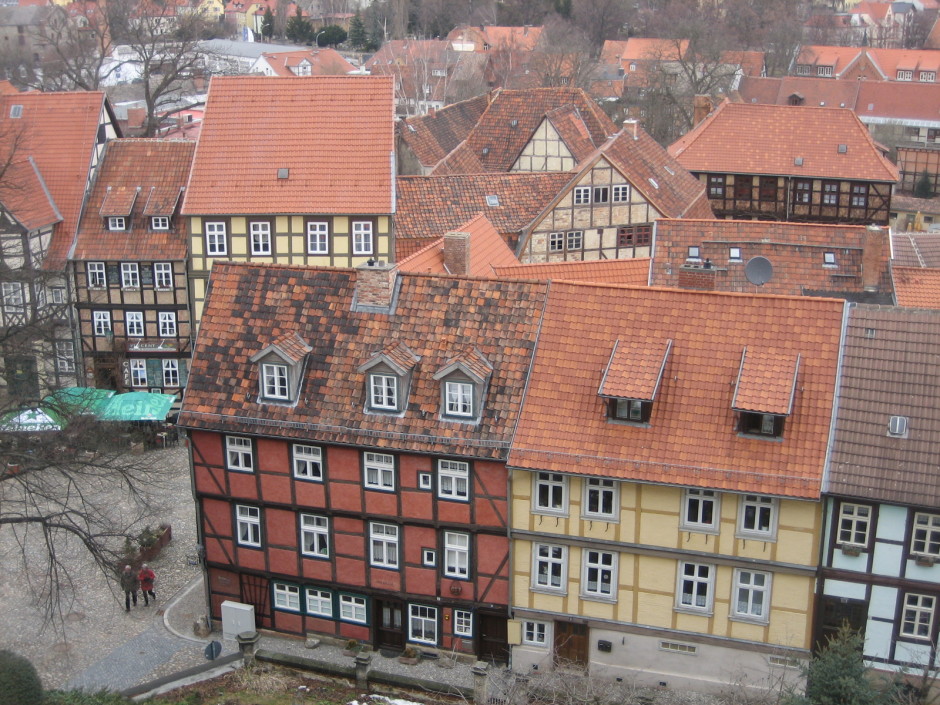Quedlinburg, a somnolent town of 28,000 in the foothills of the Harz Mountains, is caught in something of a time warp.
Quedlinburg’s historic 1,300 half-timbered buildings are its chief claim to fame, attracting visitors from all over Germany, the rest of Europe and from around the world.
For that reason, Quedlinburg has been a UNESCO World Heritage site since 1994. There is simply no other place like it in Germany.
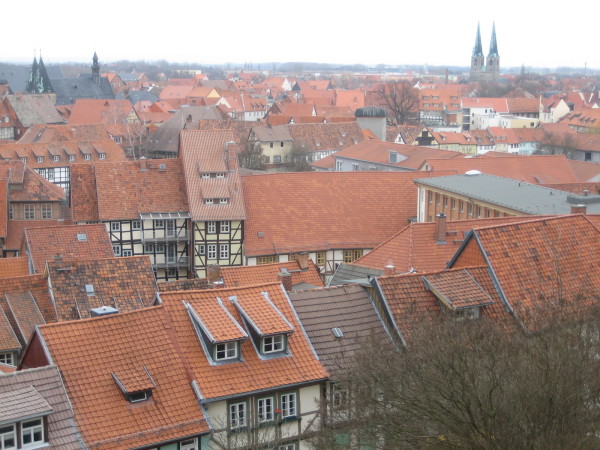
Half-timbered architecture, incorporating traditional techniques of carpentry, is found throughout Europe, particularly in France, Denmark and Poland. But in Germany, this method of timber framing was taken to the next level, reaching sophisticated heights between the 14th and 16th centuries.
It’s no coincidence that the oldest existing residential structure in Germany stands in Quedlinburg, which has more half-timbered buildings than any other town in this country. Appropriately enough, this two-storey white and brown building, which dates back to the 14th century and sits next to a canal, is now a museum that celebrates the glories of half-timbered architecture.
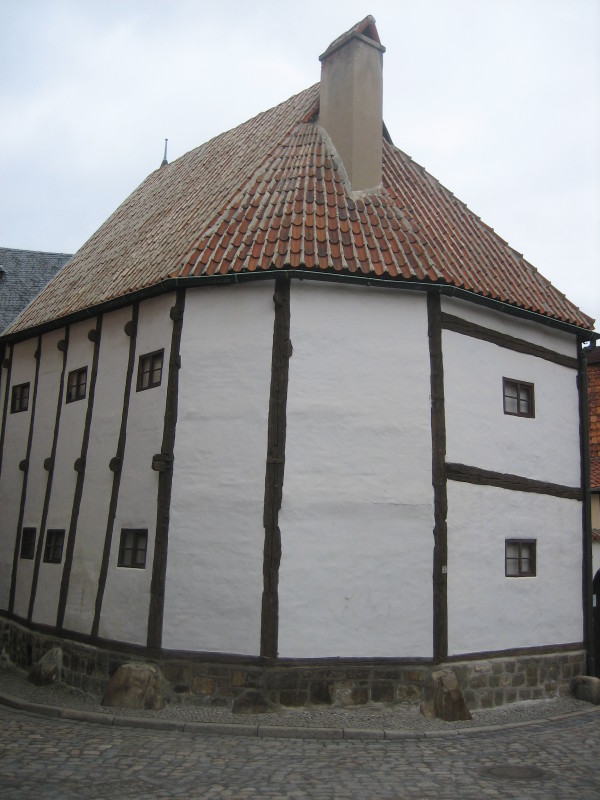
Quedlinburg’s status as a mecca of red-roofed half-timbered houses is due to a combination of factors.
Since it’s off the beaten track, deep in eastern Germany, and has not grown in decades, there was no rush to tear down historically important buildings in the name of making room for newer and far more modern ones.
Unlike many towns in Germany, Quedlinburg — a member of the Hanseatic League, a confederation of northern European market towns and guilds from the 13th to the 17th centuries — was not a target of Allied bombing raids during World War II. Since it was of no importance militarily, it was spared.
A stray American bomb hit the 11th century St. Servatius cathedral, a Romanesque landmark on a wooded hill where the first German king, Heinrich I, lies in state in a crypt.
Beyond the minor damage caused by this errant projectile, not a single half-timbered building was destroyed, leaving the town as pristine as it was before the war.

After the war, however, Quedlinburg’s architectural legacy was violated by the then East German communist government. First, attempts to renovate significant half-timbered buildings ended badly. Second, an urban renewal plan to tear down hundreds of decaying historic buildings and replace them with bleak proletarian apartment blocs lacking any character proved to be misguided.
Since the reunification of Germany in 1990, mistakes of this magnitude have been avoided. Preservation of its medieval core is the uncompromising principle that guides Quedlinburg’s planners today.
Apart from its exquisite ensemble of half-timbered buildings, St. Servatius is Quedlinburg`s best known tourist attraction.
Inside its weathered grey walls are ceiling frescoes and figurines hundreds of years old, as well as illuminated manuscripts and rare books encrusted with precious jewels.
One of these precious and irreplaceable books, stolen by an American army officer right after the war, was not returned until the late 1980s.
During the Nazi period, Gestapo chieftain Heinrich Himmler visited Quedlinburg several times in an effort to convert St. Servatius into a Nazi shrine.
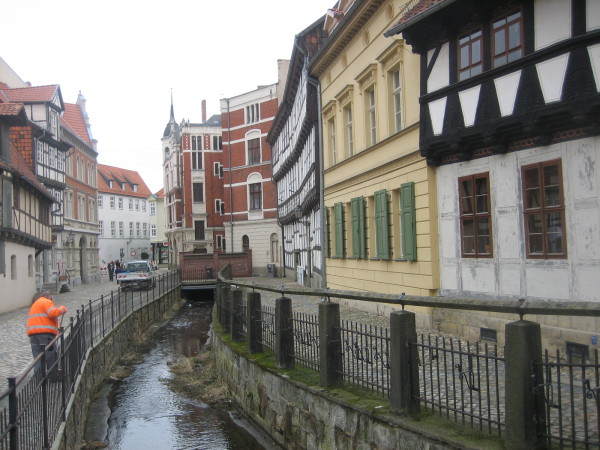
In a gesture of triumphalism, he ordered the replacement of one of its murals with a stylized Nazi eagle. It was hastily removed after the war, and today, fragments of the eagle lie broken in pieces in the basement, a testament to a twisted and destructive ideology that caused the deaths of tens of millions of Europeans, including Jews.
Before and during the Third Reich, Quedlinburg — an outpost of the Nazi movement — had a minuscule Jewish community consisting of about 20 families. Since the community was too small to support a synagogue, Jews went to a shul in nearby Halberstadt, said Quedlinburg`s mayor, Eberhard Brecht.
By his account, the Nazi reign of terror against the Jewish citizens of Quedlinburg began in 1935 with the passage of the Nuremberg Laws, which deprived German Jews of citizenship and forbade them to marry Christians.
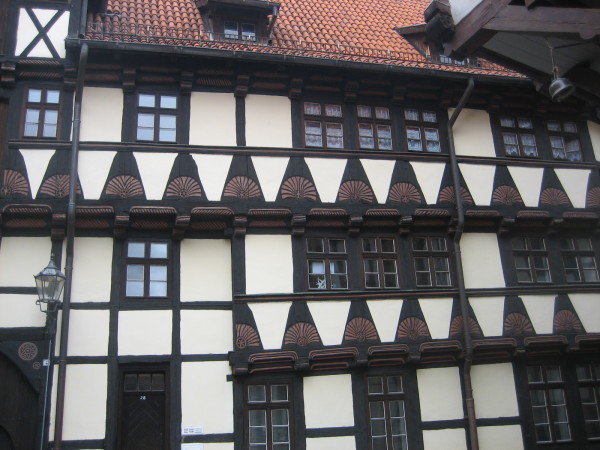
“During Kristallnacht, a lot of Jewish shops were destroyed, even a store belonging to a Jewish merchant who had been awarded the Iron Cross,” he said in a reference to that military medal.
As Kristallnacht unfolded in November 1938, he added, a Jewish man was forced to carry a large crucifix on his shoulders through town. Later, in despair, he committed suicide.
Brecht’s great-aunt and her Jewish husband tried to obtain a U.S. visa. When they failed, they killed themselves.
By his reckoning, one-third of Quedlinburg’s Jews emigrated, while another one-third perished during the Holocaust. The fate of the remaining Jews remains a mystery.
The last trace of Jewish life in Quedlinburg is a fenced-in 19th century Jewish cemetery, entry to which is possible only with a key. There is one solitary tombstone, which is engraved with a Star of David and adorned with a plaque.
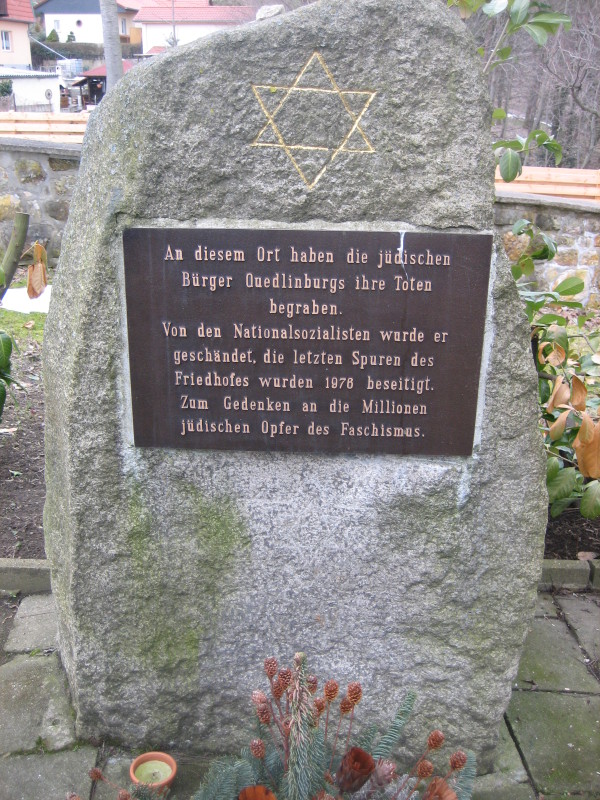
The remainder of the tombstones, having been vandalized by hooligans in the mid-1970s, were hauled away in 1976 and used as construction materials.
There are no signs in town directing visitors to the cemetery. Brecht fears that neo-Nazis may consider it a tempting target.
“Maybe I’m too careful,” he said.
